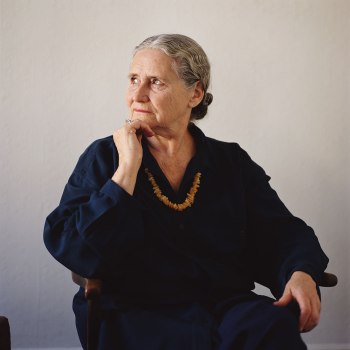
Over a long life–she was 94 when she died on Nov. 17–Lessing produced dozens of novels, stories and essays–and one explosive device. It was her great and intricate second novel, The Golden Notebook, published in 1962. In it she set for herself nothing less than the task taken on by Anna Wulf, the writer-character who is Lessing’s stand-in: to “create a new way of looking at life.”
Wulf, a beset single mother trying to live as freely as a man, keeps four notebooks. The black one recounts her youth in West Africa before and during World War II. (The daughter of English parents, Lessing grew up in what was then the British colony of Southern Rhodesia.) In the red, she examines her postwar years in London and her gradual loss of faith in communism. The blue notebook is a diary that charts her inner life. In the yellow, she works on a new novel. Then in a fifth, golden one, she tries to tie all the strands of her life together. The Golden Notebook is routinely called a landmark of the emerging feminist consciousness, which it is. When the Nobel Prize for Literature came to Lessing in 2007, the announcement called her “the epicist of the female experience.” Yet Lessing found that reading too limiting. As she told one interviewer, “The second line (of the book) is ‘Everything’s cracking up.’ That is what The Golden Notebook is about!” Which it is.
This text originally appeared in the Dec. 2 issue of TIME magazine.
